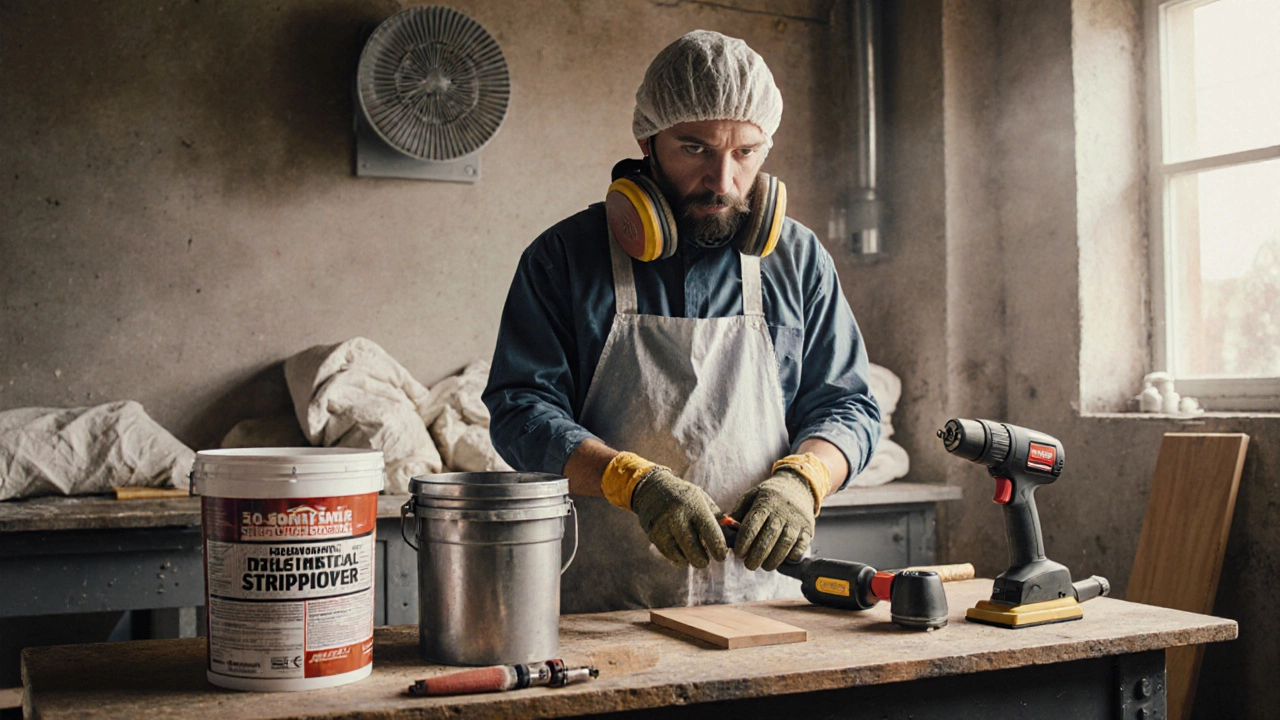Safe Paint Stripping: How to Remove Paint Without Hazards
When working with safe paint stripping, the process of removing old coatings while protecting health and the environment. Also known as non‑toxic paint removal, it combines low‑odor chemicals, mechanical methods, and strict safety measures. Eco‑friendly paint stripper, a solvent‑free or bio‑based formula that breaks down paint without harsh VOCs is the cornerstone of this approach. Because traditional methylene chloride strippers can damage lungs and linger in indoor air, using a greener alternative reduces exposure for both the applicator and occupants. Safe paint stripping also protective gear, gloves, goggles, respirators, and disposable coveralls designed to block chemical contact becomes essential; without it, even the mildest stripper can irritate skin or eyes. The technique lead paint removal, a regulated step for homes built before 1978 that contain lead‑based coatings follows the same safety principles but adds containment and proper waste disposal to avoid lead dust contamination. Finally, many professionals now prefer vapor‑free stripping, methods like enzymatic gels or low‑temperature heat that prevent airborne fumes, which improves indoor air quality and speeds up cleanup. Together these elements create a workflow where the paint comes off efficiently, the workspace stays breathable, and the surrounding environment stays clean.
Why the Right Tools and Practices Make All the Difference
Safe paint stripping requires the right combination of products and procedures, so each step supports the next. First, choosing an eco‑friendly paint stripper means the chemical reaction happens at the surface, leaving the underlying material untouched; this is crucial for delicate wood or historic plaster where aggressive solvents could cause swelling or warping. Next, putting on proper protective gear ensures that any accidental splashes or vapors don’t reach skin or lungs, which is especially important in tight spaces where airflow is limited. When the project involves older structures, lead paint removal adds a legal and health layer—workers must seal off the area, use HEPA filtration, and follow strict disposal guidelines to keep lead particles from spreading. Meanwhile, opting for vapor‑free stripping methods like calcium chelate gels or infrared heat means the work zone stays virtually odor‑free, which is a big win for residential jobs where neighbors or family members are nearby. These practices also cut down on ventilation costs and shorten the time needed for post‑strip cleaning. By linking product choice, safety equipment, hazard awareness, and low‑emission techniques, you build a system where every element reinforces the goal of a clean, safe finish without compromising speed or quality.
Now that you see how eco‑friendly chemicals, proper protective gear, lead‑specific protocols, and vapor‑free methods intersect, you’re ready to dive into the detailed guides below. Whether you’re stripping a kitchen cabinet, restoring a vintage mural, or tackling a whole‑house renovation, the articles in this collection will walk you through product selection, safety checklists, step‑by‑step application, and disposal tips so you can achieve a professional result while keeping health risks at bay.
